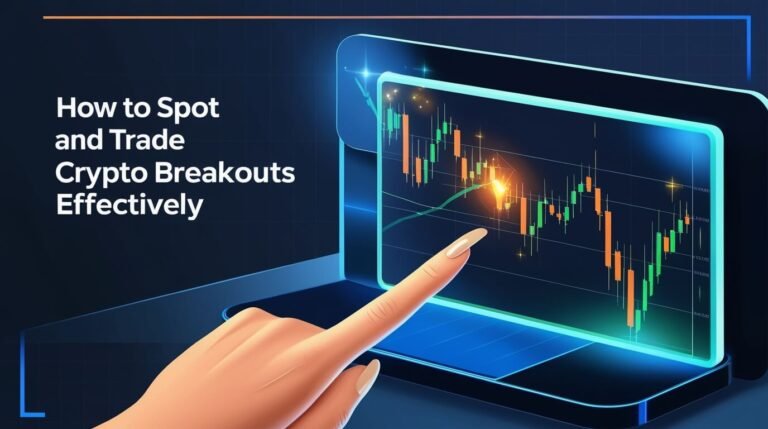As one of the largest and most popular cryptocurrency exchanges in the world, Binance has become a go-to platform for traders and investors alike. Whether you’re a beginner looking to dip your toes into the world of cryptocurrencies or an experienced trader seeking advanced trading tools, this guide will take you through all the essential aspects of crypto trading on Binance.
Introduction to Binance
Founded in 2017 by Changpeng Zhao, Binance quickly skyrocketed to prominence in the cryptocurrency ecosystem. The exchange offers a variety of services including spot trading, futures trading, staking, savings, and more. The platform is known for its wide array of cryptocurrencies, low trading fees, and robust security features.
As an introduction to the platform, you may be interested to know some key points about Binance:
- User-Friendly Interface: Whether you are using the web platform or the mobile app, Binance offers an intuitive design to simplify the trading experience.
- Extensive Crypto Offerings: Binance supports thousands of cryptocurrencies and trading pairs, making it easy to diversify your trading portfolio.
- Security: Binance prioritizes security with two-factor authentication (2FA), withdrawal address management, and an insurance fund known as SAFU (Secure Asset Fund for Users) to protect users in the event of a security breach.
Setting Up Your Binance Account
1. Registration
To get started on Binance, the first step is to create an account. Here’s how:
- Visit the Binance website.
- Click on “Register” at the top right corner.
- Provide your email address and create a strong password.
- Agree to the terms and conditions, and click on “Create Account.”
2. Verification
Binance offers two types of accounts: Basic and Verified. If you want to trade without limitations, you must complete the verification process.
- Log in to your account, go to your profile, and select “Identification.”
- Choose the type of verification (individual or business).
- Provide the necessary personal information and upload the requested documents (ID card, proof of address).
- After submission, wait for confirmation which may take a few minutes to several hours.
3. Security Settings
Enable two-factor authentication (2FA) for an added layer of security:
- From your account dashboard, navigate to “Security.”
- Choose 2FA and follow the instructions to link a mobile app like Google Authenticator.
- Additionally, consider setting up withdrawal whitelist settings to ensure that your funds are further protected.
Understanding the Binance Trading Interface
Once your account is set up and verified, you’ll want to familiarize yourself with the trading interface. Binance offers several trading views:
- Basic View: Ideal for beginners; it displays candlestick charts, market pairs, and order books.
- Advanced View: Suitable for experienced traders, offering more technical analysis tools, chart settings, and order types (limits, stop-limits).
Key Components of the Trading Interface
- Market Overview: Shows the latest market trends, price movements, and volume for various assets.
- Order Book: Displays ongoing buy and sell orders in real-time.
- Price Chart: Provides a graphical representation of price movements for a selected cryptocurrency. Traders can use various tools and indicators for analysis.
- Trading Pair Selection: Choose the cryptocurrency pairs you wish to trade (e.g., BTC/USDT).
- Order Entry: The section where you can enter orders, whether they are market orders, limit orders, or stop-limit orders.
Funding Your Binance Account
1. Depositing Funds
Once your account is set up and secured, you need to deposit funds:
- Fiat Deposits: Binance allows you to buy cryptocurrencies directly with fiat currencies like USD, EUR, etc. Simply select “Buy Crypto” and follow the prompts for deposit options such as bank transfer, credit card, or third-party services.
- Crypto Deposits: If you already own cryptocurrencies on another exchange or wallet, you can deposit them into your Binance account. Go to “Wallet,” select “Fiat and Spot,” then click “Deposit.” Choose the currency and generate a deposit address to transfer your assets.
2. Trading Fees
Binance is known for its competitive fee structure. The standard trading fee is 0.1% for both makers (those who place limit orders) and takers (those who fill market orders). However, fees can be reduced by:
- Holding Binance Coin (BNB): Using BNB to pay for trading fees yields discounts.
- Participating in the Binance VIP Program: Higher trading volumes may qualify users for lower fees.
Trading on Binance
1. Choosing a Trading Strategy
Before diving in, take the time to decide on a trading strategy. Common approaches include:
- Day Trading: Involves buying and selling on intraday price movements.
- Swing Trading: Focuses on price fluctuations over days or weeks.
- HODLing: A long-term strategy of holding onto cryptocurrencies despite market volatility.
- Arbitrage: Taking advantage of price differences across various exchanges.
2. Placing Your First Trade
To place your first trade on Binance:
- Navigate to the trading interface.
- Select the trading pair you wish to trade (e.g., BTC/USDT).
- Decide the type of order you want to place:
- Market Order: Buy/sell immediately at the current market price.
- Limit Order: Buy/sell at a specific price.
- Stop-Limit Order: An order to buy or sell once a certain price is reached.
- Enter the quantity you want to trade and review the order details before confirming.
3. Managing Your Trades
Once a trade is active, keep an eye on its performance:
- Use stop losses and take profits to minimize risks and secure gains.
- Regularly review your trading strategies and adapt based on market conditions.
Advanced Features
1. Futures Trading
For those interested in leveraging their trades, binance offers a Futures platform where you can trade with up to 125x leverage. However, leverage trading carries significant risks, and it’s essential to have a solid understanding before venturing into it.
2. Spot Trading
Spot trading is the most common type of trading where you buy or sell cryptocurrencies for immediate delivery. Binance offers various spot trading options with its built-in trading pairs.
3. Options Trading
Binance also provides options trading services, allowing traders to buy and sell options contracts based on the future price of a cryptocurrency. Like futures, options trading also comes with inherent risks that need careful consideration.
Trading on Binance can be both exciting and profitable, but it requires a clear understanding of market dynamics, risk management, and technical analysis. By following this guide, you should now be equipped with knowledge about setting up your account, understanding the trading interface, and effectively trading cryptocurrencies. Always remember to trade responsibly and only invest what you can afford to lose.
As you embark on your trading journey, stay updated on market trends, continuously educate yourself, and leverage the resources available on Binance to maximize your potential success in the world of cryptocurrency trading. Happy trading!







